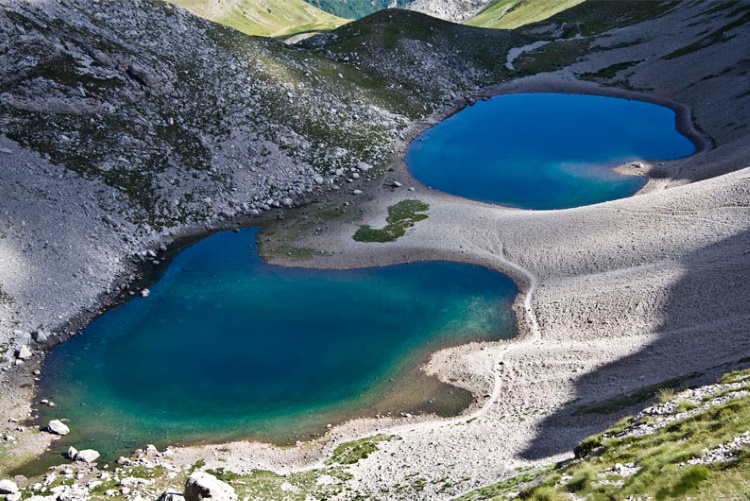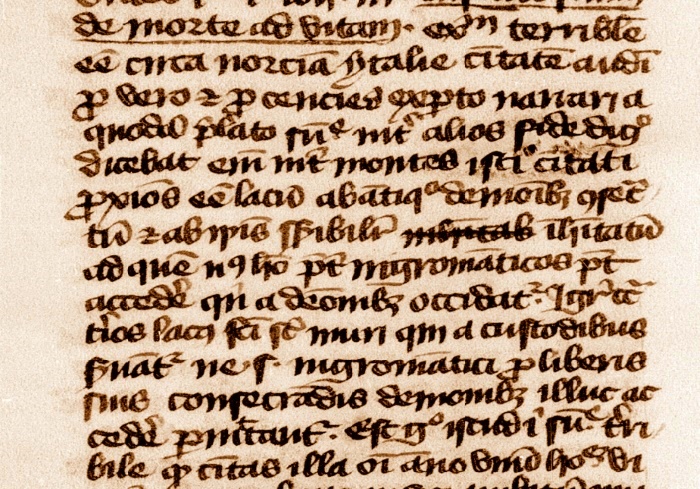22 Mar 2018
The Apennine Sibyl / The Lake of Pilatus in an antique manuscript: Pierre Bersuire and the fourteenth-century dark renown of Norcia's lake /3
In 1335, a benedictine monk, Petrus Berchorius, provides the first known mention of a lake lying in the vicinity of Norcia, in the Sibillini Range, a mountain ridge in the Italian Apennines. A mention which is very close to the true core of the legendary tale that enshrouds what we know today as the Lakes of Pilatus, and was known in earlier times as the Lake of the Sibyl, or the Lake of Norcia.
But Berchorius never writes the words “Pilatus” or “Sibyl”. He goes straight to the inner nucleus of the lake's myth. And this nucleus is definitely dark:
«And about that lake the most horrifying thing is what follows: each year that town [Norcia] sends a single man, a living man, beyond the walls that encircle the lake, as an offering to the demons, who immediately and in full view tear apart and slaughter that man; and people say that if the town does not comply, the country would be razed by the storms».
[In the original Latin text: «Est ergo istud ibi summe terribile, quia civitas illa omni anno unum hominem vivum pro tributo infra ambitum murorum iuxta lacum ad daemones mittunt, qui statim visibiliter illum hominem lacerant et consumunt, quod (ut aiunt) si civitas non facet, patria tempestatibus deperiret»].
According to Berchorius, Norcia had the habit to sacrifice a human life in the lake nested beneath the cliffs of Mount Vettore, to appease some kind of demons which would reside in the lake itself - demons that would ravage the whole region if not annually fed with the soul of a man.
Just an unfounded tale? A mere lie which Berchorius had some special, unknown reason to spread around, by including a mention of a heinous conduct in his work?
Actually, we will see that no evidence of such a barbaric and inhuman practice exists at all in any known chronicle reporting details on the ancient history of Norcia. Yet, we will also see that this peculiar topic seems to be recurrent in the tales specifically referred to the Lakes of Pilatus and Mount Sibyl.
But let's proceed with the words written by Berchorius, who further elaborates on the subject:
«Every year the town selects a certain criminal, and sends him there to the demons as a tribute. I would never believe in such a tale, for I could not read anything about such a practice in any books, unless I hadn't heard myself so illustrious a bishop firmly report this account».
[In the original Latin text: «Civitas ergo annuatim aliquem sceleratum eligit que pro tributo daemonibus illuc mittit. Istud autem quia alicubi non legi, nullatenus crederem, nisi a tanto episcopo firmiter asseri audivissem»].
Honestly enough, Petrus Berchorius just confirms his readers that no official account on the history of Norcia has ever provided any reference about such a horrible custom. However, some actual truth seems to be concealed beneath that ghastly rumor, which is reported to him by an unidentified trustworthy clergyman.
Is that all? No. “The Apennine Sibyl - A Mystery and a Legend” is proud to present the additional words spent by Berchorius on this strange hearsay. We are going to report to the contemporary readers the subsequent sentences written by the benedictine abbot on the Lake of Norcia. Words that, at all appearances, have never been reported before, as they were omitted in Arturo Graf's nineteenth-century essay of medieval legends.
For the sake of completeness, we advise the reader that our English rendering of Berchorius' words is not perfect, as the original text contains a number of scribal abbreviations which make it difficult to understand the meaning of each single word written on parchment. For additional help, we refer to the 1583 printed edition, which seems to bear the very same text, with minor variations.
So let's try to decode the lines that follow in Berchorius' excerpt, as we progress beyond the sentences which we have already reported:
«We may say, if you want, from a symbolic point of view, that this lake means Hell, namely a place and a lake assigned to demons, to which lake no one can get without being consumed by them. For this reason protecting walls were built and guarded by enforcers of the laws of God, that is to say by priests and preachers, lest men are not ruined because of wickedness. This is made to prevent, so people say, that any living men might perish coming from the town of Norcia, and in this way be required as a tribute, and mainly criminals (?) and damned souls (?) who descend alive into Hell».
[In the original Latin text: «Dic si vis allegorice quod iste lacus significat infernum, qui est locus et lacus demonibus deputatus quo nullus accedit quin sit a demonib. devoratus, et ideo murus mandatorum Dei cum custodibus, i. cum praelatis et praedicatoribus ponitur ad impedimentum [?] ne illuc homines p vitia dilabantur. Iste est ergo lacus quin homines vivos, i.aias q mori nequeunt a Norcia civitate, i.ab isto modo pro tributo appetit re petit (?), quos (?) maxime sceleratos mundus continue sibi mittit et damnandorum animas sibi solvit psal Descendunt in infernum viventes»].
This is the ancient, appalling renown of the Lakes of Pilatus, formerly known as the Lake of Norcia: a place where, according to Berchorius, living men were offered in a ritual killing to unspecified demons so as to propitiate them and avoid an impending destruction. Subsequently, walls were built to prevent such ghastly custom.
We will see, in further articles, that references to this sort of gloomy representation reappear again and again in other antique excerpts, with or without an accompanying reference to Pontius Pilate or an Apennine Sibyl.
What is the meaning of all that? What is Petrus Berchorius talking about? Did really men ever meet a deadly doom into the frosty waters of the Lakes of Pilatus, high amid the cliffs of the Sibillini Mountain Range? Why no other source on the history of Norcia seems to contain any reference to such a barbaric practice? Can we trace any other ancient text which mentions anything that might remind to us the words written by Berchorius?
The one thing we know at the present stage of our search is that it appears that we are approaching, with uneasy, reluctant steps, the sinister core of the corpus of legendary tales that ominously enshroud the Sibillini Mountain Range, in Italy, with its lakes and caves and Sibyls. A sinister core we will try to unveil through further studies, which we will present in articles still to come.
Sibilla Appenninica / Il Lago di Pilato in un antico manoscritto: Pierre Bersuire e la tenebrosa fama del lago di Norcia nel quattordicesimo secolo /3
Nel 1335, un monaco benedettino, Petrus Berchorius, riporta la prima menzione conosciuta relativa ad un lago posto nelle vicinanze di Norcia, tra i Monti Sibillini, il massiccio montuoso situato in Italia, lungo la dorsale appenninica. Una menzione che pare essere strettamente collegata con il fondamento più autentico di quel racconto leggendario che avvolge ciò che oggi conosciamo con il nome di Laghi di Pilato, e che in tempi più antichi era conosciuto come il Lago della Sibilla, o il Lago di Norcia.
Eppure, Berchorius non cita mai le parole "Pilato" o "Sibilla". Egli, invece, propone direttamente alla nostra attenzione il nucleo più profondo del mito connesso a quel lago. E questo nucleo risulta essere significativamente tenebroso:
«E questa è la cosa sommamente terribile di quel luogo: che quella città [Norcia], ogni anno, invia un singolo uomo, vivo, oltre le mura che circondano il lago, a modo di tributo per i dèmoni, i quali subito e visibilmente lo smembrano e lo divorano; e dicono che se la città non facesse questo, il suo territorio sarebbe devastato dalle tempeste».
[Nel testo originale latino: «Est ergo istud ibi summe terribile, quia civitas illa omni anno unum hominem vivum pro tributo infra ambitum murorum iuxta lacum ad daemones mittunt, qui statim visibiliter illum hominem lacerant et consumunt, quod (ut aiunt) si civitas non facet, patria tempestatibus deperiret»].
Secondo Berchorius, Norcia parrebbe avere avuto l'usanza di sacrificare una vita umana nelle acque di quel lago, profondamente annidato al di sotto delle creste del Monte Vettore, per acquietare una qualche genìa di dèmoni insediati nel lago medesimo - dèmoni che avrebbero colpito l'intera regione se non fossero stati nutriti, ogni anno, con l'anima di un uomo.
Solo una storia priva di fondamento? Una semplice fandonia che Berchorius avrebbe inteso divulgare, per qualche ragione specifica ma sconosciuta, inserendo menzione, nella propria opera, di questa efferata condotta?
In realtà, vedremo che non è rinvenibile evidenza alcuna a proposito di una pratica così disumana e barbarica in nessuna cronaca che si sia occupata di narrare le antiche vicende della storia di Norcia. Eppure, vedremo che questa tematica così peculiare apparirà in modo ricorrente nell'ambito dei racconti relativi ai Laghi di Pilato e al Monte Sibilla.
Ma proseguiamo con la lettura delle parole scritte da Berchorius, il quale ci fornisce ulteriori dettagli su questo tema:
«Ogni anno la città seleziona un qualche criminale, che poi invia in quel luogo come tributo per i dèmoni. Mai avrei potuto credere a tale racconto, perché mai ne lessi in alcuna opera, se non lo avessi udito affermare con forza da un vescovo così importante».
[Nel testo originale latino: «Civitas ergo annuatim aliquem sceleratum eligit que pro tributo daemonibus illuc mittit. Istud autem quia alicubi non legi, nullatenus crederem, nisi a tanto episcopo firmiter asseri audivissem»].
Con onestà, Petrus Berchorius ci conferma che nessun resoconto ufficiale relativo alle storie di Norcia ha mai riportato alcunché a proposito di una pratica così orribile. Eppure, una verità di qualche genere sembrerebbe nascondersi al di sotto di questa incredibile voce, a lui riferita da uno sconosciuto presbitero ritenuto degno di fede.
È tutto? No. "Sibilla Appenninica - Il Mistero e la Leggenda" è lieta di presentare all'attenzione del lettore di oggi le ulteriori parole che Berchorius ha successivamente impiegato per descrivere questa strana dicerìa. Stiamo infatti per proporre le frasi aggiuntive vergate dall'abate benedettino in merito al Lago di Norcia. Parole che, in tutta evidenza, non erano mai state pubblicate sino ad ora, in quanto esse non furono riportate nel saggio novecentesco redatto da Arturo Graf e relativo alle leggende del Medioevo.
Per completezza informativa, avvisiamo anticipatamente che la nostra resa in italiano moderno delle parole di Berchorius non è certamente perfetta, in quanto il testo originale contiene una certa quantità di abbreviazioni scribali, le quali rendono difficoltosa la comprensione di ognuna delle singole parole presenti nel manoscritto. A titolo di ulteriore ausilio, abbiamo anche fatto riferimento all'edizione a stampa del 1583, la quale pare riportare il medesimo testo, con minime variazioni.
Proviamo allora a decodificare le righe che seguono, tratte dal brano di Berchorius, proseguendo dunque oltre le frasi che già avevamo riportato:
«Potremmo affermare allegoricamente, se vuoi, che questo lago significa Inferno, e cioè un luogo e un lago abitato da demoni, al quale nessuno può avvicinarsi che non sia divorato da essi; e per questo fu costruito un muro, munito di guardie delle leggi di Dio, vale a dire di sacerdoti e predicatori, per impedire che lì gli uomini potessero perire a causa del male. Così dicono di questo lago, affinché nessun uomo vivente possa morire provenendo dalla città di Norcia, e possa in questo modo essere richiesto come tributo, e massimamente i criminali (?) e le anime dannate (?) che scendono vivi all'Inferno».
[Nel testo originale latino: «Dic si vis allegorice quod iste lacus significat infernum, qui est locus et lacus demonibus deputatus quo nullus accedit quin sit a demonib. devoratus, et ideo murus mandatorum Dei cum custodibus, i. cum praelatis et praedicatoribus ponitur ad impedimentum [?] ne illuc homines p vitia dilabantur. Iste est ergo lacus quin homines vivos, i.aias q mori nequeunt a Norcia civitate, i.ab isto modo pro tributo appetit re petit (?), quos (?) maxime sceleratos mundus continue sibi mittit et damnandorum animas sibi solvit psal Descendunt in infernum viventes»].
È questa, dunque, l'antica, terrificante fama dei Laghi di Pilato, in precedenza noti come il Lago di Norcia: un luogo in cui, secondo Berchorius, uomini viventi venivano offerti in sacrificio rituale a non meglio specificati dèmoni, a scopo propiziatorio e per evitare una imminente devastazione. In seguito, sarebbero state costruite delle mura attorno al lago, proprio per impedire questa orribile pratica.
Vedremo, in ulteriori articoli, come ulteriori riferimenti ad uno scenario così sinistro si ripresentino ulteriormente in altri brani antichi, in presenza o in assenza di una concomitante menzione dei nomi di Ponzio Pilato o della Sibilla Appenninica.
Cosa significa tutto ciò? Di cosa sta parlando, Petrus Berchorius? È veramente possibile che alcuni uomini possano avere incontrato un destino esiziale nella acque gelate dei Laghi di Pilato, in altitudine, tra le vette dei Monti Sibillini? Perché nessuna altra fonte che racconti della storia di Norcia contiene alcun riferimento in merito ad un tale barbaro costume? È possibile reperire ulteriori testi antichi che menzionino elementi che possano ricordare le parole scritte da Berchorius?
La sola cosa che possiamo dire di conoscere, a questo stadio della nostra ricerca, è che ci stiamo avvicinando, con passi timorosi ed esitanti, al nucleo tenebroso del corpus di leggendari racconti che minacciosamente sembrano rivestire le creste dei Monti Sibillini, con i laghi, la caverna e una Sibilla. Un nucleo sinistro che proveremo a svelare attraverso ulteriori studi, e che presenteremo in futuri articoli.
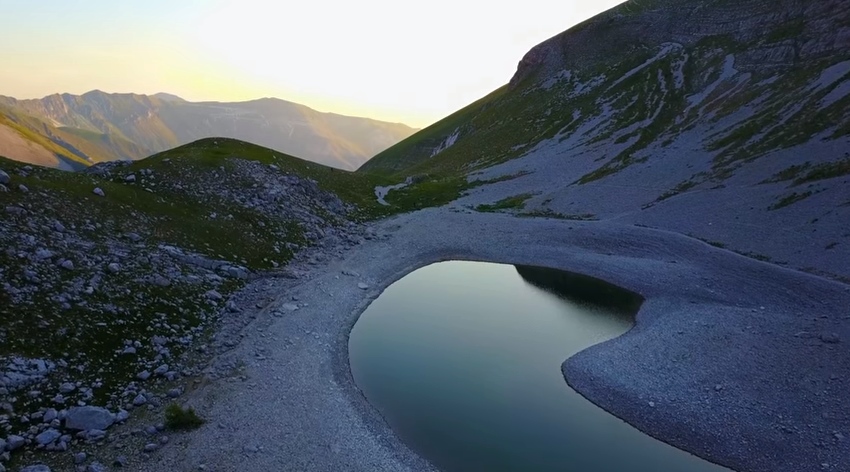

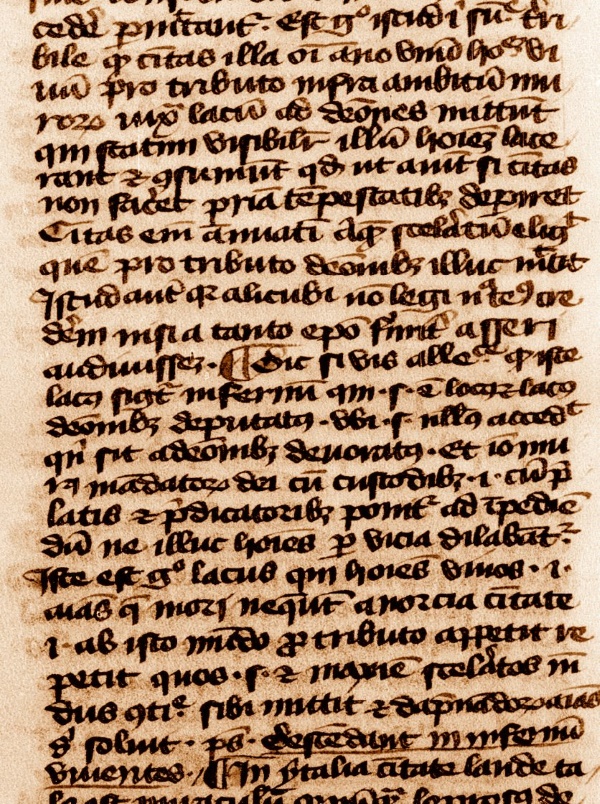

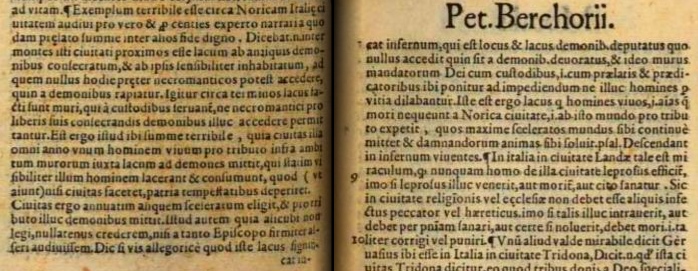

16 Mar 2018
The Apennine Sibyl / The Lake of Pilatus in an antique manuscript: Pierre Bersuire and the fourteenth-century dark renown of Norcia's lake /2
The Lakes of Pilatus, once called the Lake of Norcia, are portrayed with a dark hue in a fourteenth-century text written by a benedictine monk, Petrus Berchorius. The lake, sitting deep in its rocky nest surmounted by the frightful peaks of Mount Vettore, in central Italy, is described as a sinister place, where necromancers used to summon fiendish entities and perform ritual to consecrate their spellbooks.
However, for more than a century, a doubt has troubled the minds of many scholars who have been considering this ancient account: was Berchorius' excerpt truly referring to Norcia? Or, was it pointing to another region, in Italy or elsewhere?
The indecision originated in 1893, with the work of Arturo Graf, an Italian scholar who investigated the tales, symbols and traditions of medieval times. In his “Myths, legends and superstitions of Middle Ages”, Graf publishes, for the first time and to the benefit of modern literary scholars, the Latin text written by Berchorius, together with its Italian translation. It is clear to him that the excerpt is connected to today's Lakes of Pilatus, not far from the town of Norcia; however, the original text available to him reads «Noricam» and «Norica», rather than «Norciam» and «Norcia».
So, Graf is forced to add a footnote, in which he states the following: «In the printed version I have in my hands in this very moment, I read - a manifest error - “Noricam”. It is not improbable that Bersuire acually wrote "Norciam" instead of "Nursiam", making way to such incorrect spelling» (see figure). A reasonable conjecture on Graf's part, as the ancient territory of “Noricum” is situated in Austria and so Berhorius would have had no reason to include it as a topic in the chapter dedicated to Italy. Nor would the benedictine monk refer to that region as an «Italian town».
Was Arturo Graf's assumption true? Was he right? Is Berchorius really talking about a lake placed not in the region of Noricum, but by the town of Norcia?
During the last one hundred twenty-five years, the above doubt has never been properly cleaned up: all the scholars who, in later times, have mentioned Berchorius' words (Luigi Paolucci, 1967; Giuseppe Santarelli, 1974; all the subsequent researchers and writers) just limited their insight effort to a mere quote from the work by Graf, therefore adding nothing to the solution of this critical issue.
Today, “The Apennine Sibyl - A Mystery and a Legend” is proud to confirm that Arturo Graf, in 1893, was totally right. The learned Italian scholar actually made the correct guess.
As the nineteenth-century Italian man of letter writes in his footnote, he was considering a printed version of the “Reductorium Morale”. Just like the one we present in the following figure: a precious printed edition published in Venice in 1583.
In the printed edition, Berchorius text reads as follows: «Exemplum terribile esse circa Noricam Italiae civitatem...».
In the original manuscripted version, the same text reads a different way: «Exemplum terribile esse circa Norciam Italie civitatem...» (see figure).
And the same substitution is ecountered a few lines below: «a Norica civitate» in the 1583 version, «a Norcia civitate» in the original manuscripted version.
At last, no doubt remains: the surmise made by Arturo Graf was absolutely correct. Petrus Berchorius is reporting information about a lake, which is not in the Noricum, but in Norcia. A lake that we know today as the Lakes of Pilatus.
But let's continue our analysis of Berchorius' text. We are going to publish, for the first time ever, not only the first portion already quoted by Graf from the “Reductorium Morale” in 1893, but also the second part of the text written in the fourteenth century by the benedictine abbot: nobody has ever seen it before, and “The Apennine Sibyl - A Mystery and a Legend” is thrilled to offer the previously-unknown additional sentences to the attention of today's scholars. In the next article.
Sibilla Appenninica / Il Lago di Pilato in un antico manoscritto: Pierre Bersuire e la tenebrosa fama del lago di Norcia nel quattordicesimo secolo /2
I Laghi di Pilato, un tempo conosciuti come il Lago di Norcia, sono rappresentati con un tratto oscuro e sinistro nel testo trecentesco redatto da un monaco benedettino, Petrus Berchorius. Il lago, profondamente annidato nella sua culla di roccia, sormontata dagli orridi picchi del Monte Vettore, nell'Italia centrale, viene descritto come un luogo tenebroso, presso il quale i negromanti usavano evocare entità maligne, eseguendo magici rituali per consacrare i propri libri.
Eppure, per oltre un secolo, un dubbio ha occupato le menti di quei ricercatori che hanno avuto modo di occuparsi di questo antico resoconto: Berchorius intendeva veramente riferire il proprio testo a Norcia? O non stava forse egli indicando una diversa località, posta in Italia o addirittura altrove?
Questa incertezza aveva avuto origine nel 1893, nell'ambito di un saggio scritto da Arturo Graf, uno studioso che si è occupato dei racconti, simboli e tradizioni del mondo medievale. Nel suo "Miti, leggende e superstizioni del Medio Evo", Graf pubblica, per la prima volta e a beneficio degli studiosi moderni, il testo latino scritto da Berchorius, insieme alla traduzione italiana dello stesso. Appare chiaro, al Graf, come quel brano sia connesso a ciò che oggi conosciamo come i Laghi di Pilato, posti non lontano dalla città di Norcia; eppure, il testo originale da lui consultato recita «Noricam» e «Norica», invece di «Norciam» e «Norcia».
E così, Graf è costretto ad aggiungere una nota, nella quale così si esprime: «Nella stampa, che io ho tra le mani, si legge con manifesto errore 'Noricam'. Non è improbabile che il Bersuire abbia scritto 'Norciam' in luogo di 'Nursiam', agevolando così lo scambio» (vedere figura). Un'ipotesi ragionevole da parte del Graf, in quanto l'antico territorio del "Norico" è situato in Austria e dunque Berchorius non avrebbe avuto alcuna ragione per includerlo, come argomento di discussione, nel capitolo dedicato all'Italia. Inoltre, il monaco benedettino non avrebbe certamente fatto riferimento a quella regione come ad una «città d'Italia».
La congettura di Arturo Graf era corretta? Il nostro studioso aveva ragione? Berchorius stava realmente facendo riferimento ad un lago posto non nella regione del Norico, ma presso la città di Norcia?
Nel corso degli utlimi centoventicinque anni, il predetto dubbio non è stato mai pacificamente risolto: tutti gli autori che, in anni recenti, hanno menzionato le parole di Berchorius (Luigi Paolucci, 1967; Giuseppe Santarelli, 1974; tutti i successivi studiosi e scrittori) si sono limitati a citare dall'opera di Graf, senza dunque effettuare alcun passo in direzione della soluzione di questo punto del tutto critico.
Oggi, "Sibilla Appenninica - Il Mistero e la Leggenda" è lieta di poter confermare che Arturo Graf, nel 1893, non si era affatto sbagliato. L'erudito ricercatore italiano aveva enunciato l'ipotesi corretta.
Come scrive il letterato ottocentesco nella propria nota, egli stava lavorando su di una versione a stampa del “Reductorium Morale”. Proprio come quella che presentiamo nell'illustrazione seguente: una preziosa edizione a stampa pubblicata a Venezia nel 1583.
Nell'edizione a stampa, il testo di Berchorius recita come segue: «Exemplum terribile esse circa Noricam Italiae civitatem...».
Nella versione originale manoscritta, lo stesso testo si presenta in modo differente: «Exemplum terribile esse circa Norciam Italie civitatem...» (vedere figura).
E la stessa sostituzione è visibile anche alcune righe più sotto: «a Norica civitate» nella versione del 1583, «a Norcia civitate» nella versione originale manoscritta.
Alla fine, dunque, nessun dubbio è più possibile: l'ipotesi proposta da Arturo Graf aveva colpito pienamente nel segno. Petrus Berchorius sta riferendo notizie a proposito di un lago, che non si trova affatto nel Norico, ma a Norcia. Un lago oggi da noi conosciuto con il nome di Laghi di Pilato.
Ma proseguiamo con la nostra analisi del testo di Berchorius. Stiamo per pubblicare, per la prima volta in assoluto, non solo la prima porzione testuale tratta dal “Reductorium Morale” e già citata dal Graf nel 1893, ma anche la seconda parte del testo scritto nel quattordicesimo secolo dall'abate benedettino: nessuno ha mai avuto occasione di prenderlo in considerazione prima d'ora, e "Sibilla Appenninica - Il Mistero e la Leggenda" è felice di potere sottoporre queste ulteriori frasi in precedenza ignote all'attenzione dei ricercatori di oggi. Nel prossimo articolo.
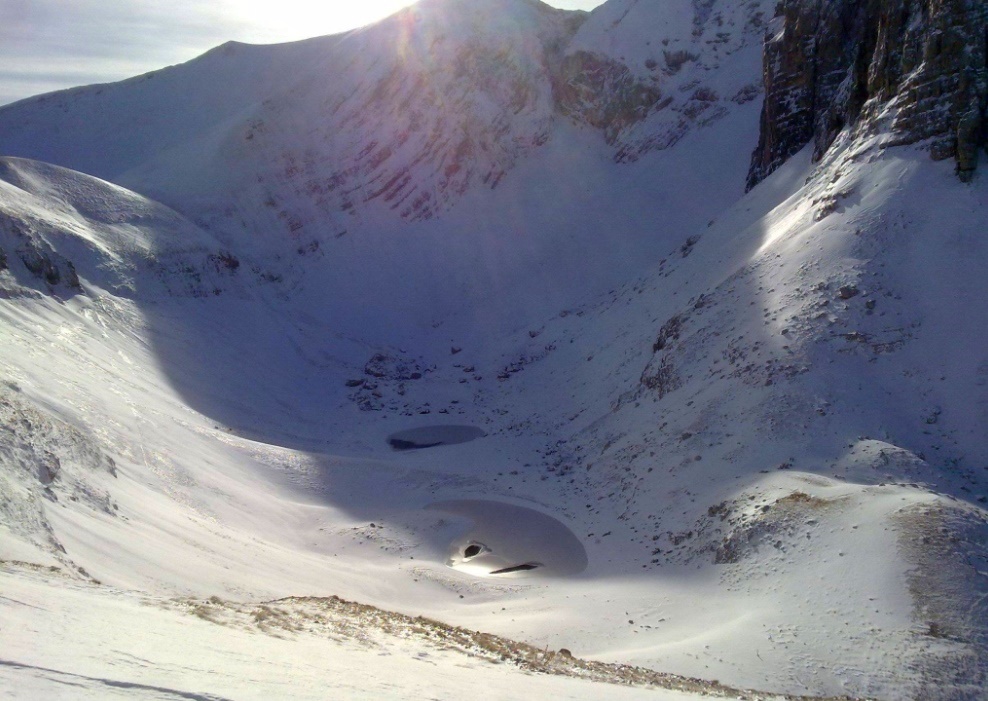







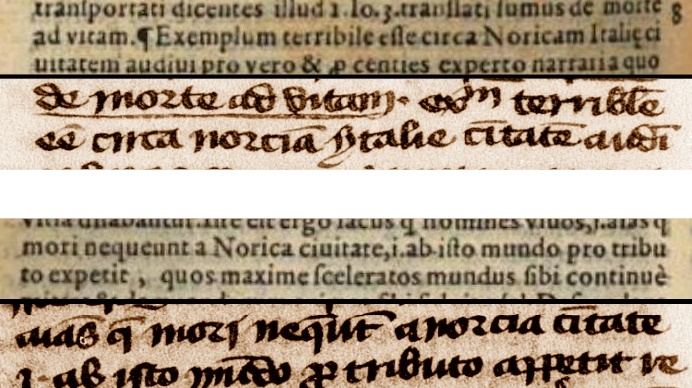

12 Mar 2018
The Apennine Sibyl / The Lake of Pilatus in an antique manuscript: Pierre Bersuire and the fourteenth-century dark renown of Norcia's lake /1
«I heard a remarkable, horrific tale about Norcia, the Italian town, that was reported to me as an absolutely proven truth by a certain prelate, a trustworthy person indeed among all men» (in the original Latin text: «Exemplum terribile esse circa Norciam Italie civitatem audivi pro vero et pro centies experto narrari a quodam praelato summe inter alios fide digno»).
This is the opening remark of a stunning excerpt found in a precious fourteenth-century manuscript: the “Reductorium Morale” by Petrus Berchorius (Pierre Bersuire), a French benedictine monk and abbot, who lived between 1290 and 1362 and was a member of the papal court in Avignon, known for his erudition and his learned literary works.
It is the first time that one of the ancient manuscripts of the “Reductorium Morale”, containing a most remarkable quote on the Lake of Norcia (also known today as the 'Lakes of Pilatus'), is published in its original version, taken from the Bibliothèque Nationale de France (Département des Manuscrits, Latin 16786), a copy written by a scribe, Julianus de Campis, in year 1399. Yet, Berchorius' text is much older, as it was probably written in 1335.
We find ourselves before the most ancient piece of evidence that is currently available as to the dark legend that enshrouds the Lakes of Pilatus, deeply set beneath the glacial circle formed by the frightful peaks of Mount Vettore, a few miles away from Mount Sibyl, in Italy. A piece of evidence that was written more than a century earlier than Antoine de la Sale's “The Paradise of Queen Sibyl”, which also mentions the sinister lake.
And this piece of evidence is impressively significant.
«He actually said to me», says Petrus Berchorius, at Book XIV, Chapter 30 “About Italy”, as he reports the story that he had once been told, «that amid the peaks which raise near that town there is a lake, which from antique times is sacred to demons and conspicuously inhabited by them; today, no men but necromancers can get to the lake withouth being killed by the demons. Because of that, walls were built around the shore of the lake, and watched over by guards, lest necromancers be allowed to access the place to consecrate their books to the demons».
[In the original Latin text: «Dicebat enim inter montes isti civitati proximos esse lacum ab antiquis daemonibus consecratum et ab ipsis sensibiliter inhabitatum, ad quem nullus hodie praeter necromanticos potest accedere, quin a daemonibus occidat. Igitur circa terminos lacus facti sunt muri qui a custodibus servantur, ne necromantici pro liberis suis consecrandis daemonibus illuc accedere permittantur»].
Thus, the earliest text we have about the Lakes of Pilatus, written as early as the first half of the fourteenth century, does not convey the slightest reference to the name of Pontius Pilate and the legend connected to the burial of the body of the Roman prefect of Judaea into the Italian lake, as in later literary works, such as Antoine de la Sale's. Instead, it provides a most important confirmation: the lake was a place used to practice necromancy, because demons lived in there. And that was known since antiquity.
This is a strong confirmation of a theory we are currently starting to conceive, which will be set out in future comprehensive articles: there is a legendary core in the myth of the Sibyl's cave and lake, which is veiled by a number of superimposed layers of both literary and popular origin, which nothing have to do with the inner nucleus of the legend.
This nucleus is closely linked to the dark renown we find in Petrus Berchorius' account and other literary sources as well.
A dark renown that, if we continue with our perusal of Berchorius' manuscript, grows darker and darker. For a tribute seems to be requested by the fiendish beings who dwell beneath the icy waters of the lake of Norcia.
A tribute to be paid in the form of human lives. As we will see in the next article.
Sibilla Appenninica / Il Lago di Pilato in un antico manoscritto: Pierre Bersuire e la tenebrosa fama del lago di Norcia nel quattordicesimo secolo /1
«Ho udito narrare un terribile racconto a proposito di Norcia, città d'Italia, riferitomi come cosa assolutamente vera e sicura da un certo prelato, persona sommamente attendibile tra tutti gli uomini» (nel testo originale latino: «Exemplum terribile esse circa Norciam Italie civitatem audivi pro vero et pro centies experto narrari a quodam praelato summe inter alios fide digno»).
È questa la frase iniziale di un testo straordinario, reperibile all'interno di un prezioso manoscritto risalente al quattordicesimo secolo: il "Reductorium Morale" di Petrus Berchorius (Pierre Bersuire), un monaco e abate benedettino francese, vissuto tra il 1290 e il 1362 e attivo presso la corte papale di Avignone, noto per la grande erudizione e la produzione di dotte opere letterarie.
È la prima volta che uno degli antichi manoscritti del "Reductorium Morale", contenente una importantissima citazione a proposito del Lago di Norcia (conosciuto oggi con il nome di 'Lago di Pilato'), viene pubblicato nella sua versione originale, tratta dalla Bibliothèque Nationale de France (Département des Manuscrits, Latin 16786), un'opera redatta da un copista, Julianus di Campis, nell'anno 1399. Ma il testo di Berchorius è assai più antico, essendo probabilmente risalente al 1335.
Ci troviamo di fronte alla più antica evidenza oggi disponibile in relazione all'oscura leggenda che circonda i Laghi di Pilato, profondamente incastonati nel fondo del cerchio glaciale formato dai paurosi picchi del Monte Vettore, a poche miglia di distanza dal Monte Sibilla, in Italia. Un'evidenza che fu posta su pergamena più di un secolo prima rispetto al "Paradiso della Regina Sibilla" di Antoine de la Sale, il quale anch'egli fa menzione del sinistro specchio lacustre.
E questa evidenza è tanto impressionante quanto significativa.
«Raccontava egli infatti», prosegue Petrus Berchorius, al Capitolo 30 "De Italia" del Libro XIV, nel riferire quanto a lui narrato, «che tra le montagne che si innalzano in prossimità di questa città si trova un lago, dagli antichi consacrato ai dèmoni, e da questi visibilmente abitato, al quale oggi nessun uomo, ad eccezione dei negromanti, può accedere, senza che venga ucciso dai dèmoni. Per questo motivo, attorno al lago sono state costruite delle mura che sono sorvegliate da guardie, affinché non sia permesso ai negromanti di accedere a quel luogo per consacrare i propri libri ai dèmoni».
[Nel testo originale latino: «Dicebat enim inter montes isti civitati proximos esse lacum ab antiquis daemonibus consecratum et ab ipsis sensibiliter inhabitatum, ad quem nullus hodie praeter necromanticos potest accedere, quin a daemonibus occidat. Igitur circa terminos lacus facti sunt muri qui a custodibus servantur, ne necromantici pro liberis suis consecrandis daemonibus illuc accedere permittantur»].
E così, il testo più antico a nostra disposizione che ci racconti dei Laghi di Pilato, scritto prima della metà del quattordicesimo secolo, non riporta la benché minima menzione del nome di Ponzio Pilato, né della leggenda connessa all'inabissamento del corpo del prefetto romano della Giudea nel lago italiano, così come invece appare in opere letterarie più tarde, come quella di Antoine de la Sale. Al contrario, questo testo ci fornisce una conferma importantissima: il lago era un luogo presso il quale veniva praticata la negromanzia, perché in esso vivevano dèmoni. E ciò era noto sin dall'antichità.
Si tratta di una significativa conferma della teoria che stiamo attualmente cominciando a delineare, e che sarà illustrata in futuri articoli maggiormente esplicativi: esiste un nucleo leggendario, nell'ambito del mito della grotta e del lago della Sibilla, che è occultato da una pluralità di strati sovrapposti aventi origine sia popolare che letteraria, i quali nulla hanno a che fare con il cuore profondo della leggenda.
Questo cuore è strettamente collegato alla fama tenebrosa rinvenibile nel racconto di Petrus Berchorius, parimenti presente anche in altre fonti letterarie.
Una fama tenebrosa che, proseguendo nella nostra lettura del manoscritto di Berchorius, diviene a mano a mano ancora più oscura. Perché appare manifesto che un tributo venga richiesto dagli esseri maligni che dimorano al di sotto delle acque gelide del lago di Norcia.
Un tributo che deve essere corrisposto nella forma di vite umane. Come vedremo nel prossimo articolo.
